
Hoya Carnosa Compacta 'Mauna Loa'
Hoya carnosa compacta 'Mauna Loa' is a subspecies of Hoya carnosa compacta. Therefore, you will likely see it labelled in many different ways, including Lura Lei Hoya. Therefore, it is sometimes referred to by these names.
Hoya carnosa compacta 'Mauna Loa' is an epiphytic vine with thick, succulent-like leaves. It has inherited the curly leaves of the Hoya carnosa compacta, but the biggest difference in the Hoya carnosa compacta 'Mauna Loa' is its variegation. It has light green/yellow/white/cream variegations that complement the green part of the leaves, giving it a stunning look.
The plant is native to the tropical regions of East Asia and Australia. In the warmer months, it forms beautiful clusters of white, pink and red flowers.
This collection is empty
Continue shopping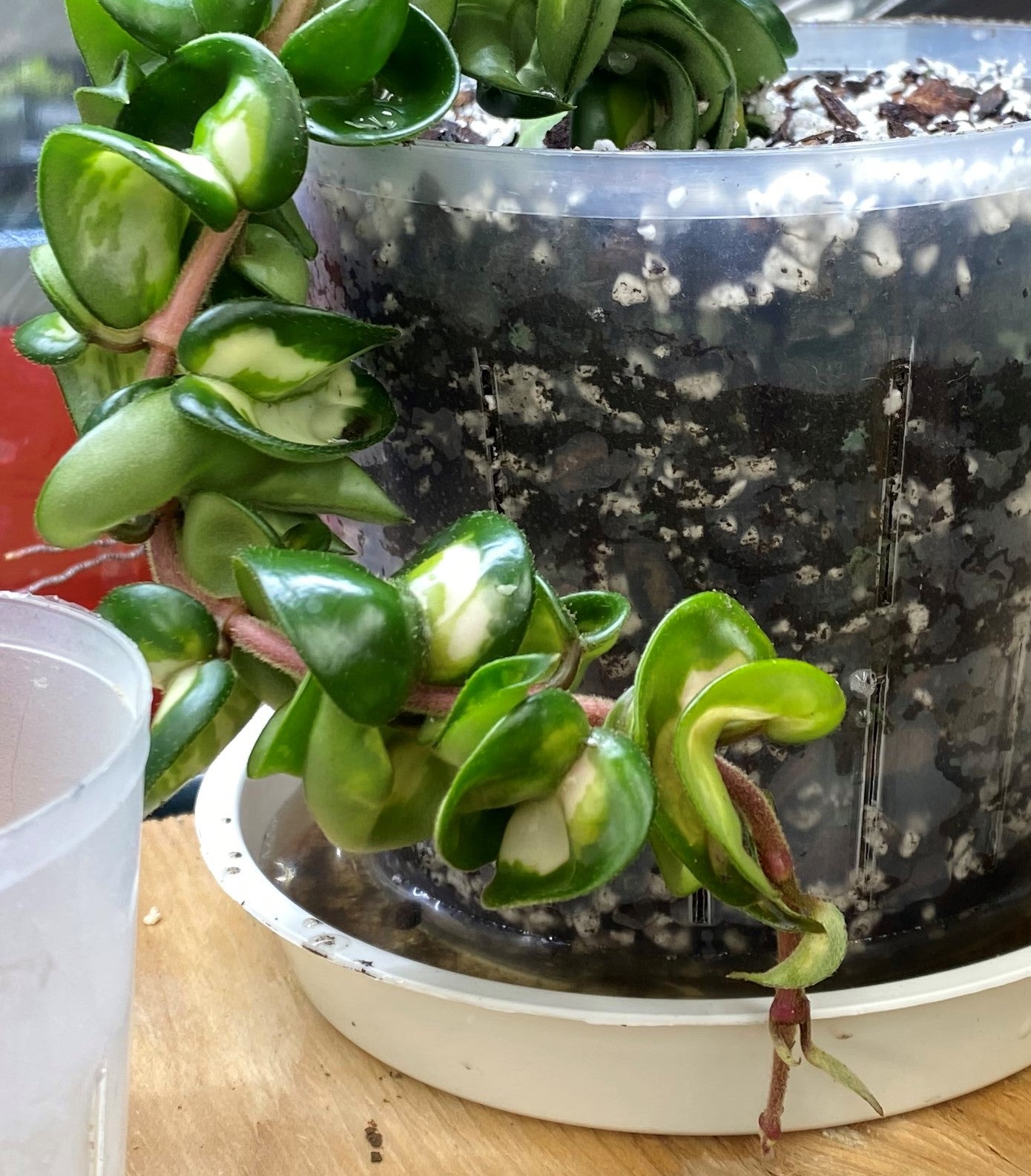
Specifications:
Scientific name: Hoya carnosa compacta
Common names: Mauna Loa
Origin: Australia, India, and parts of southern China.
Flower colour: White to pink
Genus: Hoya
Family: Apocynaceae (Asclepiadaceae)
Kingdom: Plantae
Type:Flowering vine
How to care for
Hoya carnosa compacta 'Mauna Loa'
This hoya has nearly the same requirement as that of other hoyas; semi-arid conditions, well-draining soil and warm temperatures.
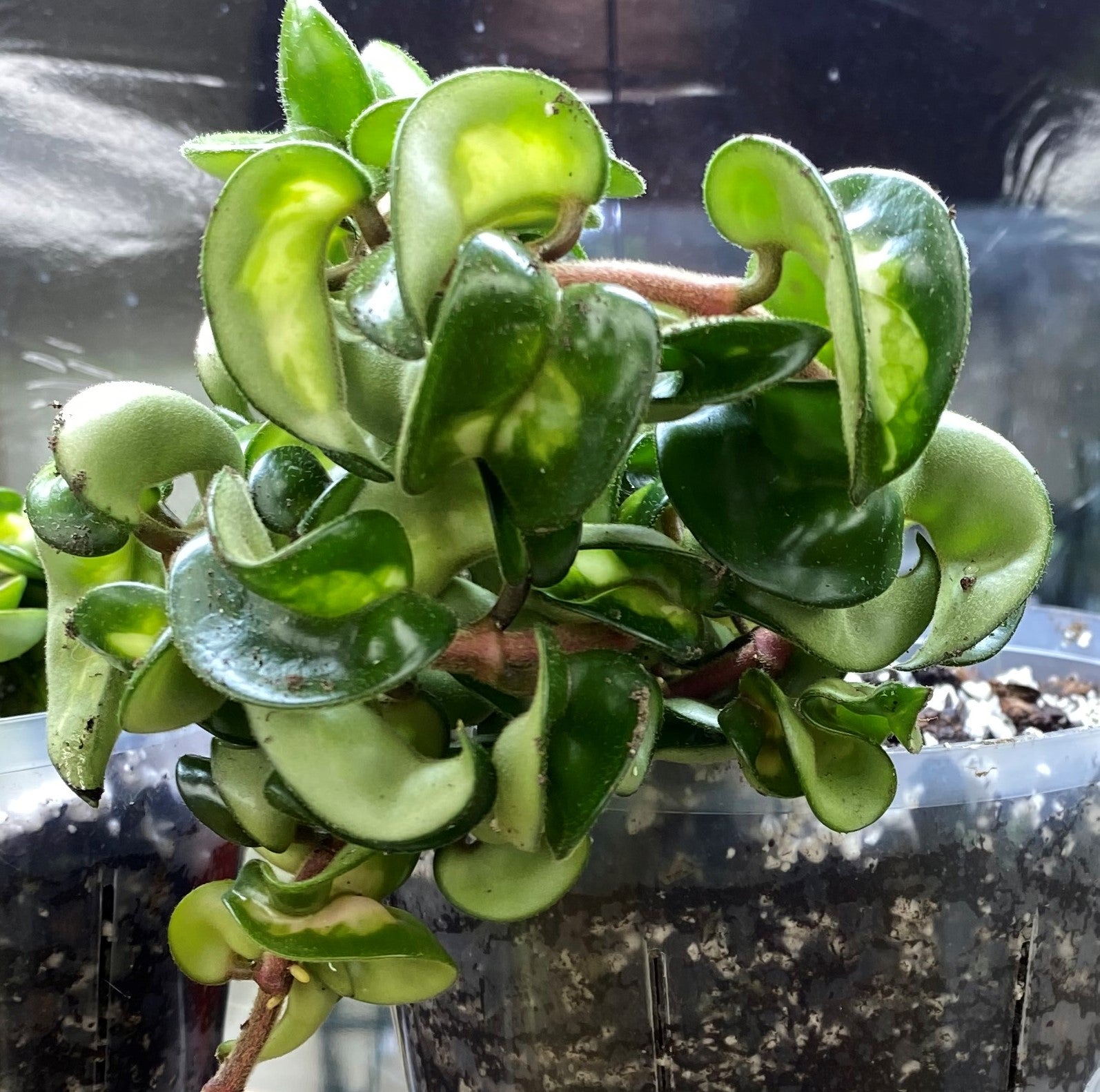
Summary:
- Bright indirect light
- Temperature range 60 and 80 degrees Fahrenheit
- Humidity between 60% and 80%
- Well-draining soil
- Semi-arid conditions
- Fertilizing during the summer months
Hoya carnosa compacta 'Mauna Loa' Detail
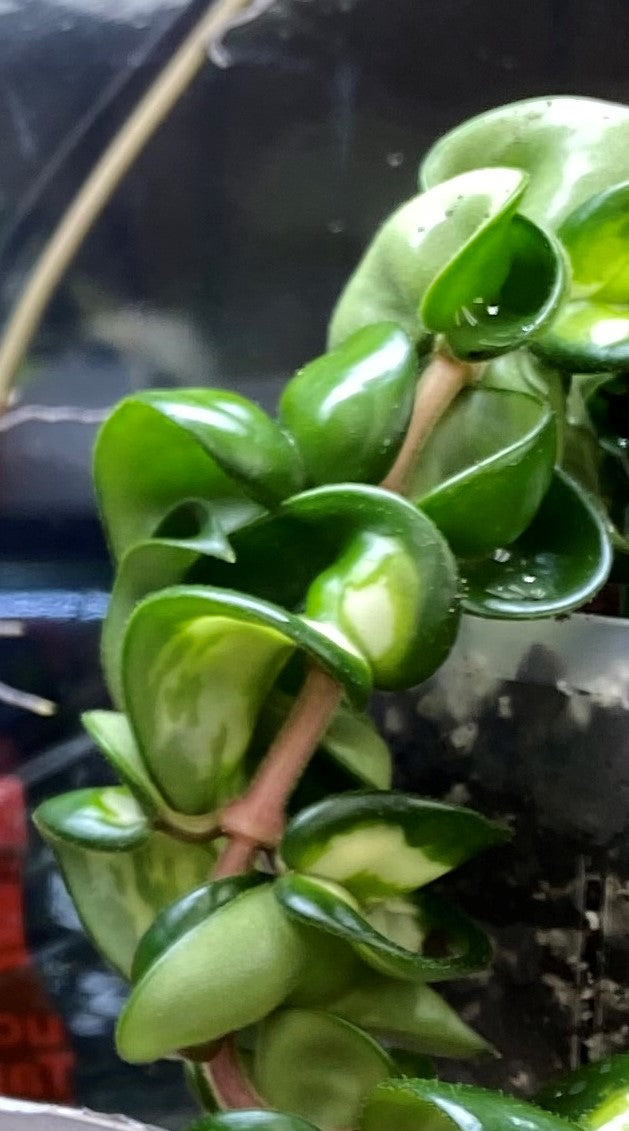
Light Requirements:
- The Hoya carnosa compacta 'Mauna Loa' is a variegated version of the Hoya carnosa compacta. As such, you should not treat them the same in terms of lighting. This is due to the light green variegation that the H. carnosa 'Mauna Loa' has.
- The shading is caused by the lack of chlorophyll that gives the leaves their rich green color. While this is nice to look at, it also means that it cannot absorb as much light as the normal Hoya carnosa compacta, which has solid green foliage.
- Since plants need light for photosynthesis, which they use to generate their own energy for growth, the Hoya Mauna Loa requires more light than the normal Hoya carnosa compacta.
- Even though the Hoya carnosa compacta can tolerate a little less light, you will notice the effects (slower growth, no flowers, etc.) much sooner with the H. carnosa compacta 'Mauna Loa' if you give it less light.
- It does best with indirect, filtered, diffused or dappled light. Even though it can tolerate a little direct sun, it should not be in this location for more than 1-2 hours per day.
- Therefore, an east or west-facing window that is just far enough away from the sun's rays is best. A south-facing location is also good for the plant, but it will need a greater distance from the window or some protection (such as curtains or blinds that filter direct sunlight).
- If it gets too much sun, it will lose its variegation and waxy appearance. Its leaf colors also become dull. In extreme cases, the strong light (at midday and in midsummer) burns the foliage, causing brown or black burn marks.
- If you find it difficult to get natural light into your home, you can also use artificial light to supplement the natural light, or you can use the grow lights alone.
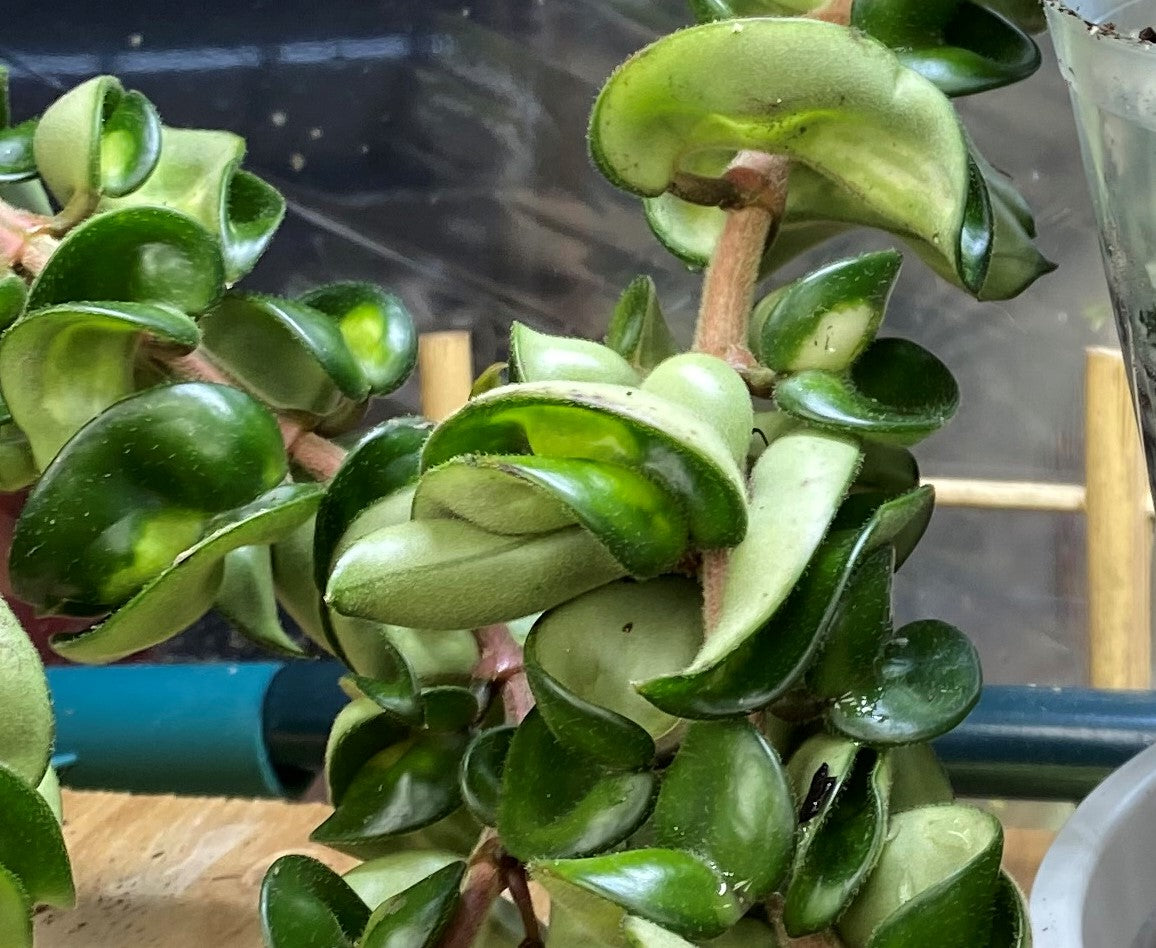
Temperature Requirements:
- The H. carnosa compacta 'Mauna Loa' is native to the tropical regions of East Asia and Australia. While there are some snowy areas in these regions, that is not where the plant grows. Instead, it grows in warmer areas where temperatures are warm and sunny year-round and there is no snow.
- For this reason, the H. carnosa compacta 'Mauna Loa' is perfect for USDA hardiness zones 10-12 outdoors. These regions have mild winters with plenty of sunshine and no snow or frost.
- If you live in these areas, you can keep the plant outdoors year-round, either in a pot or in the ground.
- However, where it is colder than 50 degrees Fahrenheit, the Mauna Loa Hoya is better suited as an indoor plant while summer vacations are spent outside.
- Indoors, it's easier to care for the plant because you do not have to move it. This is because it grows best at temperatures between 60 and 80 degrees Fahrenheit, with the lower range for the night and the upper range for the day.
- Keep in mind that nighttime temperatures fall between 10 and 15 degrees Fahrenheit in most cases. So if you live in a colder place or in winter, you should check how low the temperature is at night.
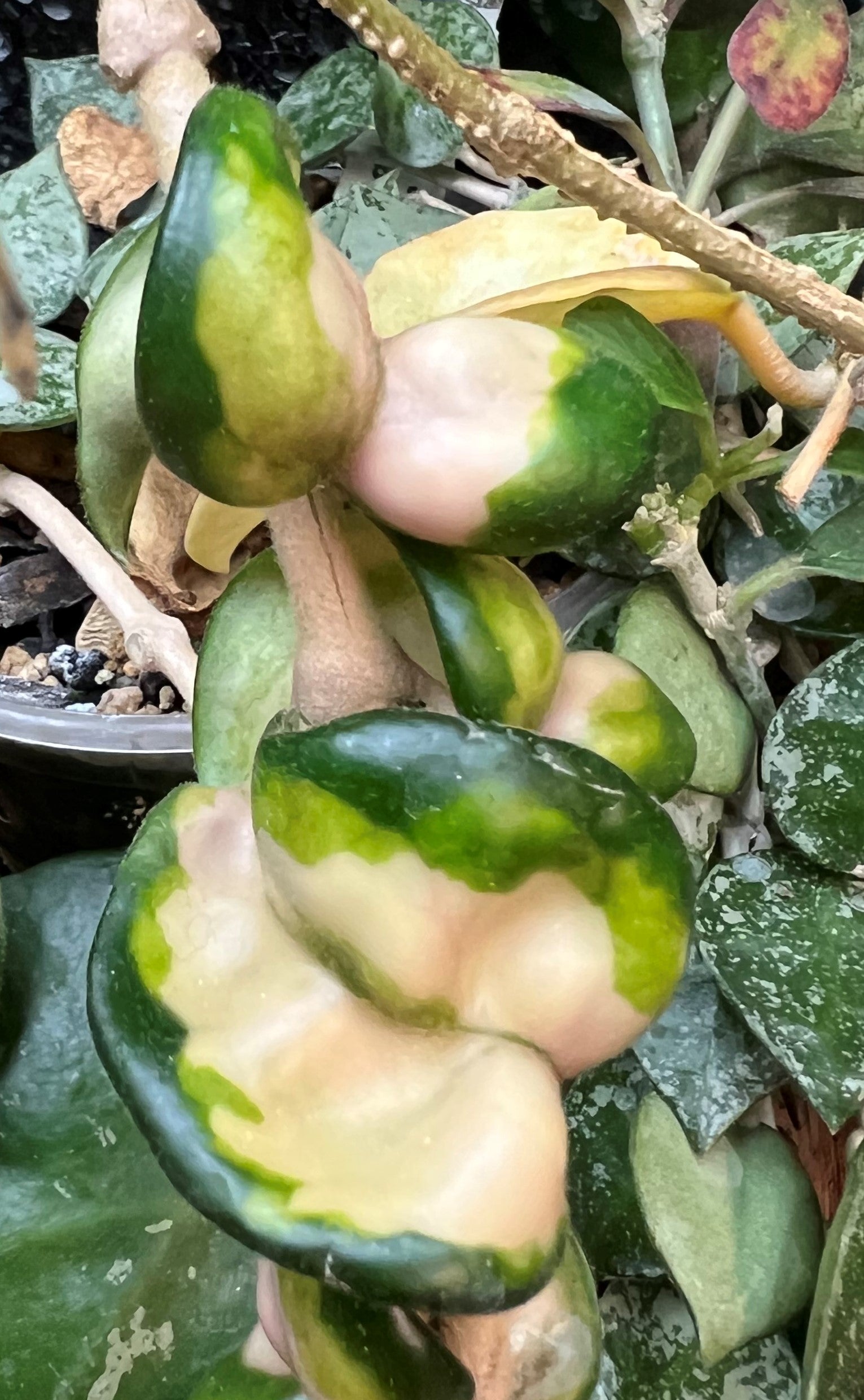
Humidity Requirements:
- Humidity is another important aspect to consider when caring for the H. carnosa compacta 'Mauna Loa'.
- Ideally, it appreciates humidity between 60% and 80%. However, since its leaves are thick and semi-succulent, it can tolerate drier air. The reason for this is that it stores water in its foliage to survive dryness.
- Therefore, it can easily tolerate humidity between 40% and 60%. It can also be a little lower than that. However, how low the humidity depends on the other environmental factors in your home.
- Once the humidity drops below 40%, you should monitor the plant to see how it responds.
- If you see dry, brown or crispy leaf tips, this is a sign that the humidity has gotten too low. If this is not the case, the plant is perfectly happy with the conditions.
- You can invest in a humidifier or place the plant on small stones in a bowl filled with water. Some growers like to mist the plant, but you need to do this regularly, as the effect is only temporary.
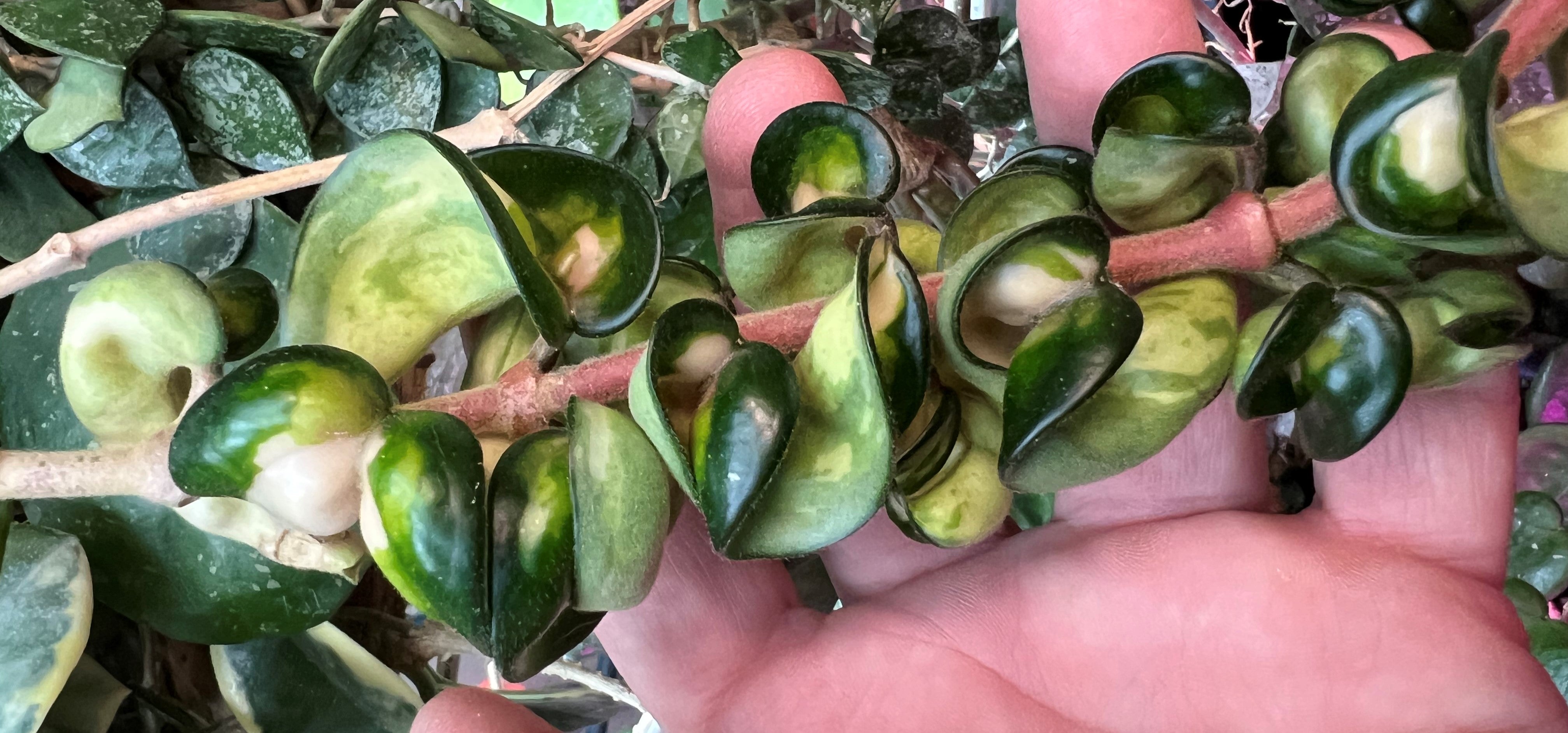
Watering Requirements:
- Because these plants store water in their foliage, they can tolerate drought to some degree. So they do not need a lot of water.
- This means that the plant will do best in the warmer months if you wait until the soil is almost dry before giving more water. A dryness level between 50% and 75% is sufficient.
- In winter, allow the soil to dry even more between waterings, as cold weather increases the risk of root rot (since moisture takes much longer to dry).
- To mimic how the Hoya Mauna Loa is watered by rainfall in the forest, it is best to water the plant by soaking the potting soil and then allowing the excess liquid to drain completely. By flooding the root ball, the roots receive a lot of moisture (similar to a downpour in the forest).
- But after that, the excess water must drain away quickly (similar to how roots dry quickly in the air when it stops raining).
- In general, the plant should not be left in water for more than 15 minutes.
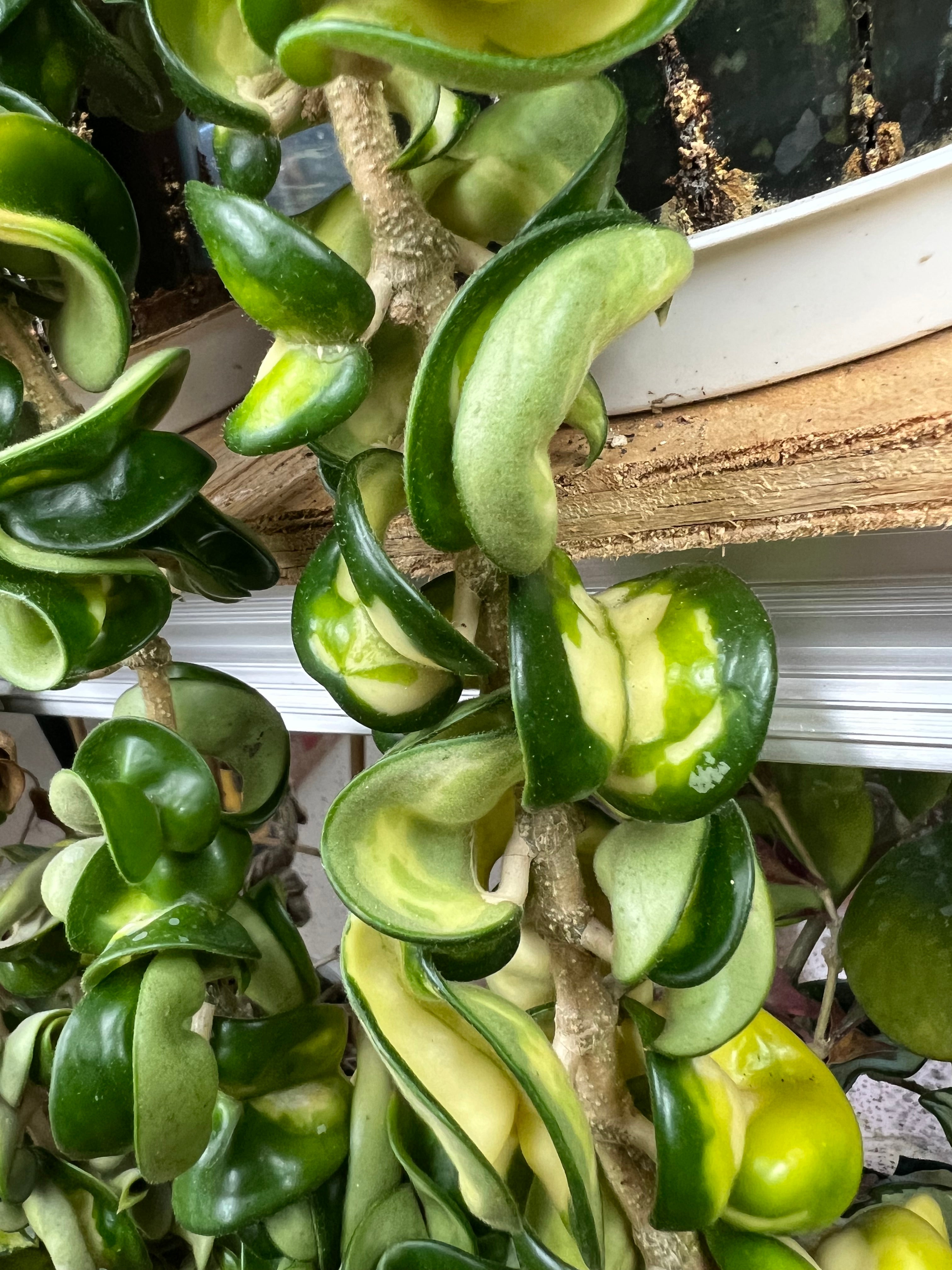
Soil Requirements:
- The best soil for the H. carnosa compacta 'Mauna Loa' is well-drained, light and airy.
- You should use this type of soil because it can quickly drain excess water after flooding the potting soil. This way, the roots will not stay in the water too long (which increases the risk of root rot).
- Also, the plant thrives best in soil with a pH of 6.1 to 7.5, so that it can optimally absorb nutrients from the soil.
- You can use the following mixes to help your plant thrive:
- 1 part cactus mix with 1 part perlite and 1 part orchid mix
- 2 parts peat moss with 1 part perlite
- 1 part potting soil with 1 part succulent and cactus mix
- 1 part potting soil with 1 part coconut fibre

Fertilizing Requirements:
- The H. carnosa compacta 'Mauna Loa' needs fertilizing. But it does not need much. The plant is a light feeder, so it can get by with a weak fertilizer or a dilution of the usual houseplant fertilizer. It also only needs fertilizing once a month during its growing season (spring and summer).
- If you live in the tropics, however, the plant's growing season lasts all year round. And you will see it growing 365 days a year continuously. Therefore, in Southeast Asia and South America, you can water and fertilize the plants 12 months a year outdoors.
- This is not the case in the Northern Hemisphere because the weather is a little different there. If you live in Florida, Texas, California and other southern coastal areas, the growing seasons are a little longer.
- So be careful not to over-fertilize. Once the plant stops growing (it will when the season gets cooler), stop fertilizing.
- For this reason, it does not need to be fertilized in the winter.
- In spring and summer, you can use a balanced liquid fertilizer, diluted to half strength.
FAQ
Use this text to share information about your product or shipping policies.
Do you ship overseas?
Yes, we ship all over the world. Shipping costs will apply, and will be added at checkout. We run discounts and promotions all year, so stay tuned for exclusive deals.
How long will it take to get my orders?
It depends on where you are. Orders processed here will take 5-7 business days to arrive. Overseas deliveries can take anywhere from 7-16 days. Delivery details will be provided in your confirmation email.
Any question?
You can contact us through our contact page! We will be happy to assist you.

